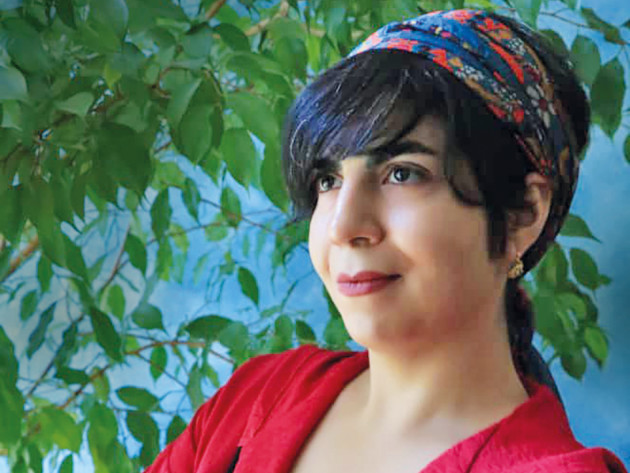
Q&A: Asieh Hagh Shenas, researcher, wine lover and old vine champion
Iranian-born Asieh Hagh Shenas is yet to qualify as a winemaker, but nonetheless is already a rising star in the wine world, as Andrew Catchpole discovers.
What are you currently up to and how did you arrive in France?
I’m near Angers in the Loire. I recently finished my thesis here as an Erasmus student – I’m working on climate change and the varietal diversity, with Chenin and Sauvignon Blanc – I started in Sancerre and continued here, searching for the clones that are more suitable for climate change. I’m originally a chemical engineer, I had a masters in Iran, but because of my love of wine, I couldn’t continue my passion there. So I decided to apply for another masters – my home university is in Italy, Padova, and my subject is Italian food and wine. I passed my first year, food, and with wine – because that was really special for me – I decided to be in France, to continue my Erasmus traineeship here. I graduate in July and will be in Bordeaux next year, doing another diploma, to be an oenologist.
What is it that inspires you about wine?
For me it’s really intimate and interesting, because I started my [first] degree in a university in the north-west of Iran, near Zagros, in [a city called] Urmia. And the region, before the Iranian Revolution, was famous for producing wine. So, my passion for wine started to grow when I was there, doing my masters. Wine is made in Iran, illegally, but there is still a winemaking culture for the Jews and Christians, who can produce their own wine, but not sell it.
For me, wine is the intersection of science and art – when I look at a work of art, or listen to music, if it’s a masterpiece, it’s immortal. And maybe I can produce a wine that can age 50 or 60 years, and some day someone says “that’s a good work”, then that would be a pleasure and a kind of immortality. I don’t think I can do that in my country, for the moment, but maybe I can do it in another country.
Where would you choose to make wine?
I really like France, but when I was at Wine Paris I tasted a lot of amazing wines from England. With the vision that they have, and with climate change, I think there are a lot of possibilities in the North.
Can you explain your fascinating tasting ability?
I was told I have a unique category of describing wine, for me when I taste it synchronises with music and colour – and, if it’s a wine that is really impressive, really sensational, it’s like an explosion of colour and notes, for example Mozart or Vivaldi. I’m sometimes hesitant to mention this, because it doesn’t sound logical!
And with my Iranian background, the spices and fruits are different, even the pomegranate is different in Iran. So when I was doing my WSET Level 4 and I saw the [tasting] card, I didn’t know what raspberry and blueberry were; I tasted other types of fruits. But my professor told me that was OK, I could use my sensibility to these other fruits and spices.
Tell us more about your work with old Iranian vines.
I’m working with Shahram Soltani, the owner of Drood Winery, the only official Persian winemaker who works with indigenous varieties from the old vineyards that are nestled in the Zagros Mountains, to keep the Persian winemaking tradition alive. They are bush vines, at an elevation of between 2,000-2,500m, it’s something really unique, and their age can be between 200-300 years old. He exported the grapes from Iran to Sweden and vinified them there. At the moment, he produces four wines from the indigenous varieties, the names are Lorkosh, Gorchesh, Samarghandi and Rasheh. The uniqueness of this heritage of old vines is that all of them are ungrafted, there is no phylloxera in Iran.
What’s next?
I’m not involved in winemaking yet, but we are working very closely with Shahram, documenting vineyards for the Old Vine Registry. He’s found vines that are estimated to be 500-600 years old. Like Georgia, wine is entangled with our culture. Shahram suggested to me, after I’ve graduated, that I could work with him, but at the moment I’m taking it step by step, working with Sarah [Abbott MW of the Old Vine Registry] and Shahram; there is this very rich heritage and we are really happy to revive this. I tell myself that maybe this kind of work can help people that come after me.




